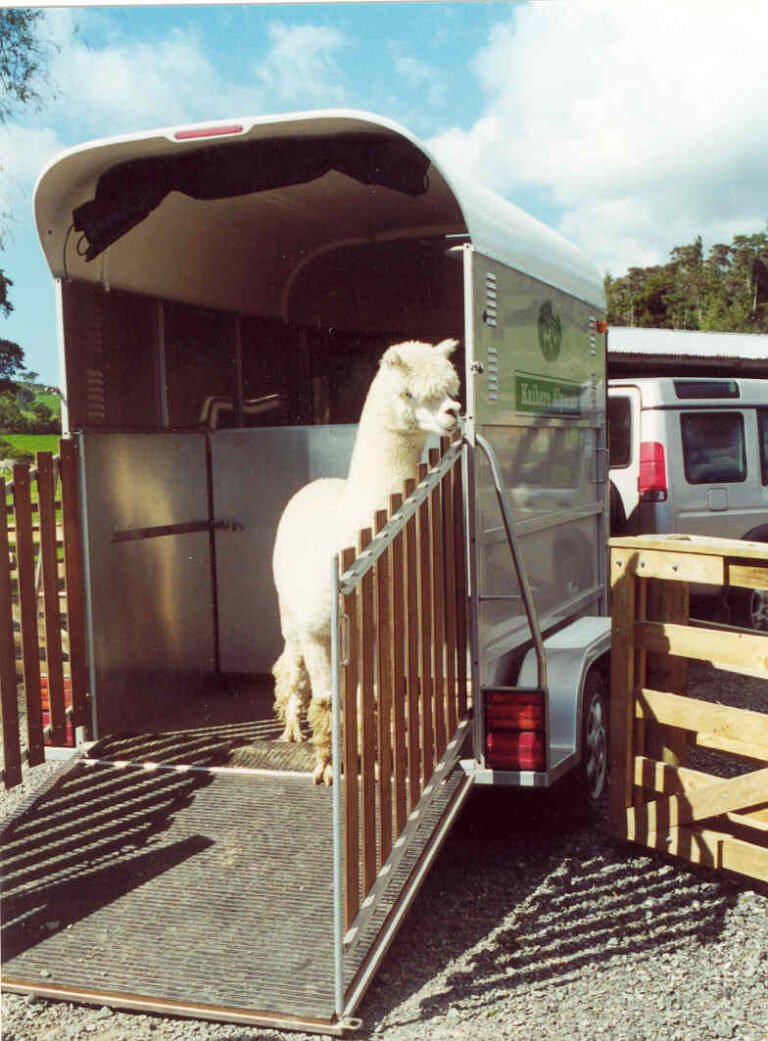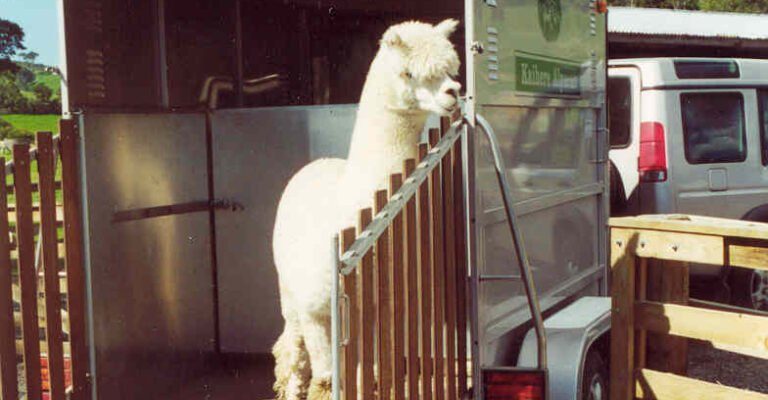
Transporting these gentle animals safely is all about preparation and the right equipment. Think of it like building a cozy nest for them; it needs to be secure and comfortable to minimize stress. Choosing the right transport vehicle and being aware of the proper handling techniques can make all the difference. Let’s dive into the essential steps to ensure your alpacas have a safe and smooth journey.
Choose the Right Vehicle
First things first, you need a suitable vehicle for transporting your alpacas. Most people use either a horse trailer or a livestock trailer designed for larger animals. These trailers are usually ideal because they provide ample space and are constructed to keep your animals safe during transit.
When selecting a trailer, consider the following factors:
- Size: Make sure your trailer is spacious enough for all the alpacas you plan to transport. They shouldn’t be cramped; each alpaca should have enough space to stand comfortably and move around a bit.
- Ventilation: Alpacas can easily overheat, so the trailer should have good ventilation. Look for trailers that have windows or vents to allow fresh air to circulate.
- Flooring: The trailer’s floor should be solid and non-slippery. You might want to add bedding like straw or hay for comfort and stability.
Remember, making the right choice at this stage will set the tone for a stress-free journey.
Prepare Your Alpacas for Transport
Before loading your alpacas into the trailer, preparation is key. Think of it like getting your friends ready for a road trip—you don’t want anyone feeling anxious or uncomfortable.
Start by ensuring that your alpacas are well-fed and hydrated. A healthy snack before the journey can make them feel more at ease. You might also want to familiarize them with the trailer beforehand. Let them explore the trailer in a calm setting, so they’re not surprised when it’s time to load up.
Here’s how to ease their nerves:
- Calm Environment: Keep the surroundings calm and quiet. Avoid loud noises or sudden movements that might startle them.
- Handling: Use gentle and reassuring language when guiding them into the trailer. Alpacas respond well to a calm voice and soft gestures.
- Positive Reinforcement: Reward your alpacas with treats when they load up smoothly. This makes them associate the trailer with something positive.
Remember, the goal is to minimize stress. Happy alpacas make for a happier journey!
Loading Procedures: Step by Step
Loading your alpacas into the trailer should be a careful process. Think of it like a dance; it requires patience and coordination. Here are the steps to follow:
1. Open the Trailer Door: Ensure the trailer entrance is clear and open. Keep it wide enough for them to walk straight in without hesitation.
2. Lead the Alpaca: Using a halter and lead rope, gently lead the first alpaca toward the trailer. Always move slowly and keep the rope slack to avoid pulling.
3. Encourage Them Inside: If they hesitate, gently guide them inside using your body. Sometimes, a little nudge or a gentle tap on the back can help them feel secure enough to enter.
4. Close the Door: Once all your alpacas are loaded, securely close the trailer door. A quick check to ensure they’re settled is a good idea.
Remember to stay calm! Your energy can influence how the alpacas feel about the entire experience.
Transportation Tips for a Smooth Journey
Once you’re on the road, it’s essential to maintain a smooth ride for your alpacas. Imagine if you were in a car that took sharp turns or jolted along a bumpy road—it wouldn’t be pleasant! Here’s what you can do to ensure a comfortable trip:
– Drive Slowly: Keep your speed low, especially on bumpy roads. Sudden stops or sharp turns can spook your alpacas.
– Monitor Temperature: If it’s hot outside, check the trailer periodically for airflow and comfort. If possible, park in shaded areas during breaks.
– Minimize Noise: Try to keep loud music or chatter to a minimum. Your alpacas will likely appreciate a peaceful environment.
Occasionally checking on them during breaks can help you gauge their comfort level.
Unloading Your Alpacas Safely
Unloading is just as critical as loading, so don’t rush it. Picture it like a delicate finale to your road trip. Here’s how to do it with care:
1. Open the Trailer Door: Gently open the door while standing to the side to avoid startling them.
2. Lead Them Out One by One: Use the halter and lead rope to guide each alpaca out slowly. Encourage them to step down carefully, especially if there’s a ramp involved.
3. Allow Space: Give them a moment to adjust to their new surroundings. They might want to take a little time to explore and get their bearings.
4. Check Their Condition: After unloading, take a moment to look them over. Ensure they’re comfortable and unharmed after the trip.
By following a gentle approach during unloading, you’ll help your alpacas adapt to their new environment better.
Post-Transport Care and Considerations
Once your alpacas are safely off the trailer, don’t forget about their care. This stage is crucial, much like winding down after a busy day. Here’s how to keep your animals happy:
– Hydrate Them: Offer fresh water as they might be thirsty after the journey. A good drink can help them feel refreshed.
– Check Their Health: Look for any signs of stress or injuries. If anything seems off, consult a vet for advice.
– Allow Time to Settle In: Give your alpacas some time to acclimate to their new environment. It’s natural for them to be a bit unsure at first.
Caring for them post-transport is essential to ensure their physical and emotional well-being.
Common Problems and Solutions
Even with careful planning, hiccups can occur during transport. It’s good to be prepared for possible challenges. Here are some common issues and how to handle them:
– Stress: If your alpacas seem stressed, try giving them some quiet time in a safe environment with familiar items like blankets or toys.
– Unwillingness to Load: If they refuse to enter the trailer, don’t force them. Instead, give them some space and try again later. Patience is your best friend.
– Overheating: Keep an eye on the temperature during transport. If it feels too warm, find a shady spot or a breezy area to let them cool down.
Being proactive about these issues can save you a lot of trouble down the road.
Transporting alpacas safely doesn’t have to be a stressful experience. With the right preparation, proper equipment, and a compassionate approach, you can make the journey smooth and comfortable for your furry friends. Just think of it as a thoughtful adventure rather than a chore, and you’ll be set up for success.
Remember, taking the time to ensure your alpacas feel safe and secure will pay off in happier animals. So, gear up, plan ahead, and get ready for a safe trip with your woolly companions!

